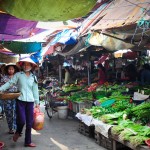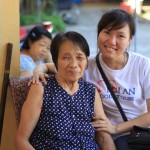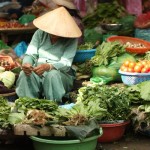Division of Labor by Gender.
In prerevolutionary Vietnam the “public” ( ngoai ) domain was the male domain while the “domestic” ( noi ) domain was for women. This pattern still largely remains with women performing most of the essential tasks for running the household such as cooking, cleaning, going to market, and caring for children. Outside the home, women dominate the business of petty trading which is a common sideline to earn money in many families. In urban areas women are often secretaries or waitresses, occupying lower level service positions. In general, men perform the majority of public activities, particularly business, political office or administration, and occupations that require extended periods away from home, such as long-distance truck driving. Men also control the most prestigious religious roles such as being a Buddhist monk or Catholic priest. While both men and women engage in all phases of agricultural production, the physically demanding activities of plowing and raking are mostly performed by men.
The Relative Status of Women and Men.
Vietnamese revolutionary policies endorse the principle of gender equality, but its realization in social life has been incomplete. Men dominate official positions, the Communist Party, business, and all other prestigious realms of social life. Women play a strong role within their families, a point made in the reference to the wife as the “general of the interior” ( noi tuong ). The position and status of women has improved significantly since 1950, but lower literacy rates, less education, and a smaller presence in public life indicate that their inferior status remains.
Soure: hoian-tourism.com
Post Views:
2,425






